Today, I’m going to show you how to find good niche SaaS ideas that people are actually willing to pay for.
Niche down. Think Semrush for SEO, Multilogin for antidetect browsers, or Canva for designs.
Niche is everything. Don’t try to be everything to everyone. An app that helps X people solve Y problems and does it well is always better than a jack of all trades and master of none.
It all boils down to one question:
How do you find good niche SaaS ideas that can potentially make tens of thousands or more?
Today, I’ll show you:
- How to find niche SaaS ideas backed by data that are hungry for a solution.
- How to validate those ideas to ensure you’re building something people are willing to pay for.
Quick one: If you read this blog post and find it helpful, let’s connect on LinkedIn: Collins Awusa. 😉
How to find Niche SaaS ideas backed by data that are hungry for a solution.
You don’t need a groundbreaking idea. You need to solve a problem that already exists.
Finding the right niche starts with understanding the market.
But more than that, it’s about paying close attention.
You’ve got to pay attention than ever.
Pay attention to:
- Yourself
- your environment
- people at work, and
- the conversations happening in social media groups.
And you have to be intentional about it.
The goal?
To spot markets that are underserved but have a strong demand.
1. Start with Your Personal Struggles
As Dan Koe always says: “You’re the niche.”
Sometimes, the best SaaS ideas come from problems you face in your own life.
If something frustrates you daily, chances are it’s frustrating for others too.
Question to help you find out:
– What tasks do I dread doing?
– What processes take way longer than they should?
– What do I wish I could automate?
For instance:
Say you spend hours each week managing client feedback. And You wish there was a tool that could help streamline it but there is none. That’s a potential SaaS idea right there…man
N/B: Once you identify this problem, don’t make mistake about it. Write it down. Describe why it’s a problem and how much time, money, or effort it costs you.
This will help you see the value in solving it. Sometimes I do this and when I come back to look at my ideas, I lose interest or maybe I don’t see the potential any longer. One takeaway here: write your ideas down.
- Use SEO Data

Instead,
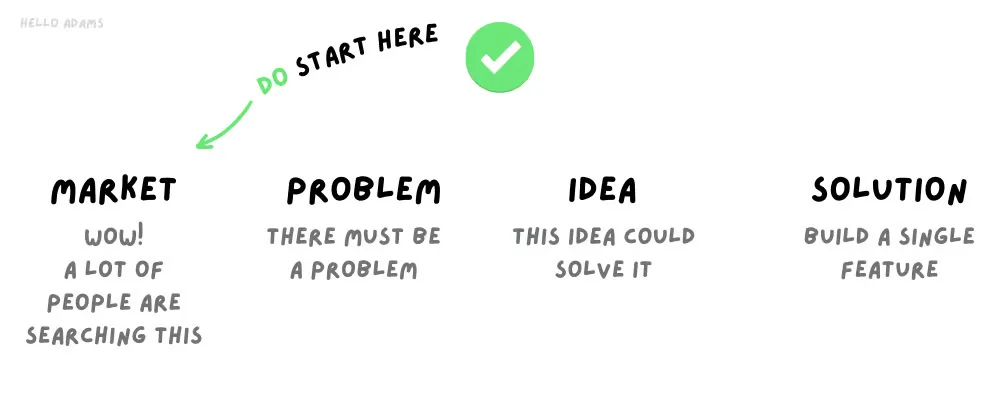
Credit: Hello Adams
8.5 billion Google searches are made daily.
What are people searching for?
Solutions.
When people type something into Google, they’re looking for answers to their problems. This makes SEO data a goldmine for finding niche SaaS ideas. SEO tools like Semrush & Ahrefs makes it easy to analyze what people are searching for and to understand the intent behind those searches. With this it is easy to trace gaps in the market where solutions are limited.
Here’s how I use SEMrush to find niche SaaS ideas, specifically focusing on the AI niche and building AI tools:
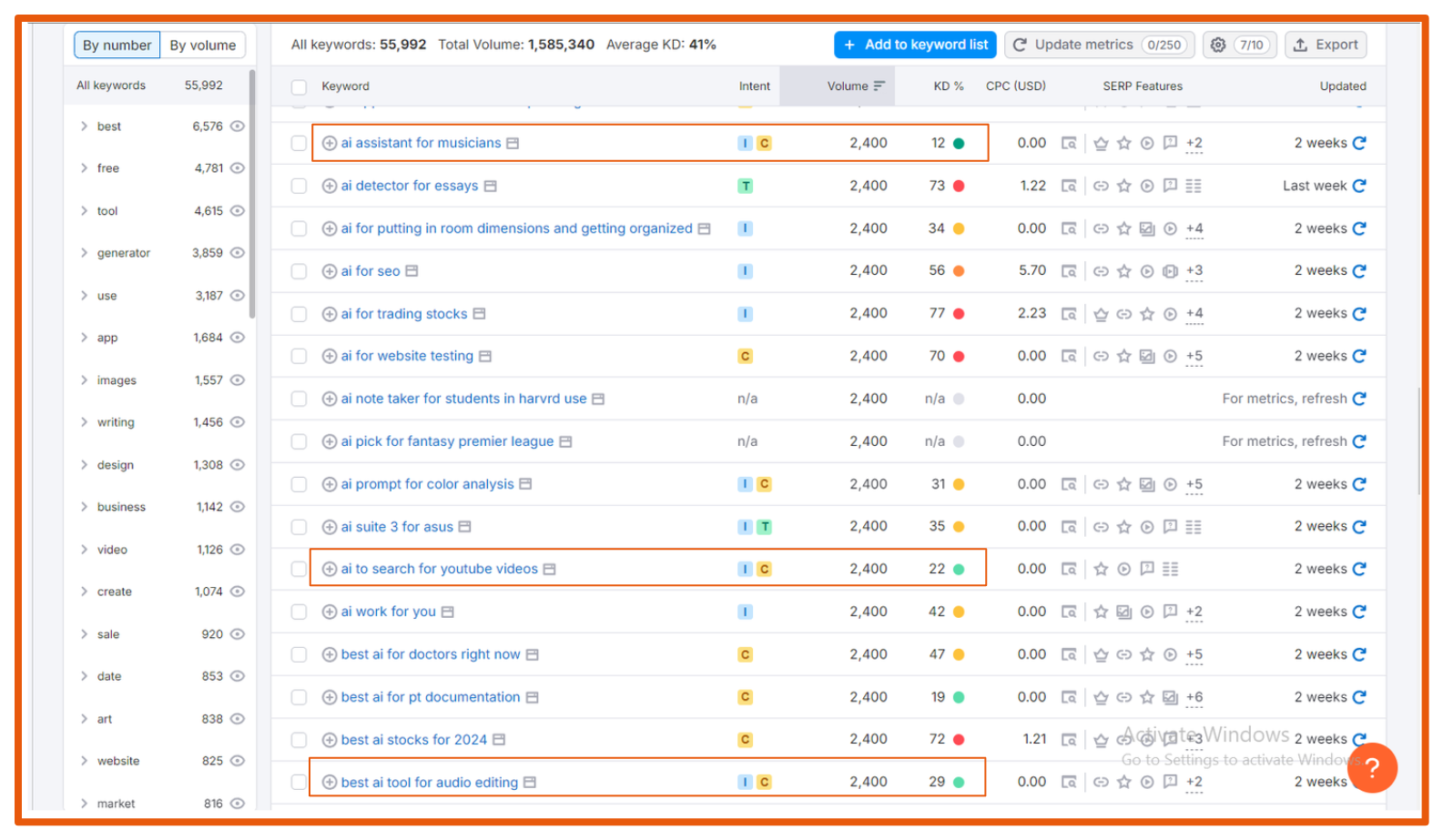
Big search volume + Easy to rank == good sign of demand
Step 1: Start with Broad Searches
I begin by typing “AI for” into the search bar under the Keyword Magic Tool in SEMrush.
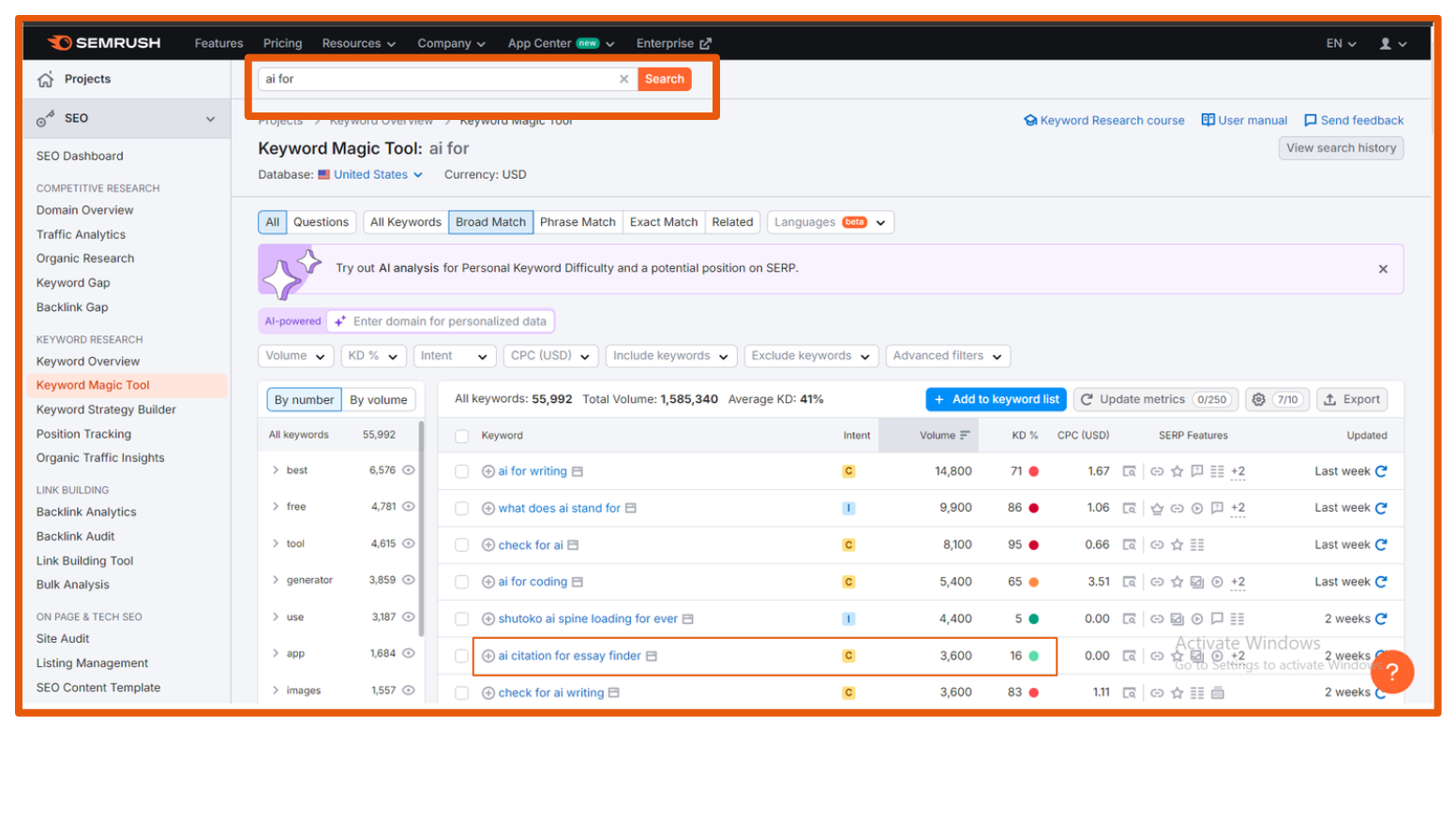
Step 2: Select “Broad Match”
Next, I select “Broad Match” to get a wider range of keyword suggestions.
This helps me see all the variations of phrases that people are using in their searches, giving me a better idea of different niche opportunities.
Example: When I searched for “AI for”
I saw “AI citation for essay finder” with commercial intent
I have to search for more…
 Each of these could be a potential niche SaaS idea.
Each of these could be a potential niche SaaS idea.
Step 3: Check the Intent Behind Each Keyword
This is a crucial step.
Not all keywords mean the same thing, even if they look similar.
You need to understand the intent behind each search.
What to Look For:
SEMrush categorizes intent into informational, commercial, navigational, and transactional.
Focus on commercial and transactional keywords because these indicate that users are actively looking for tools or solutions they’re ready to pay for.
This will determine what to build —–> if it is commercial or informational intent.
If the keyword has informational intent, users are just looking for information, not necessarily a solution they’ll pay for —–> maybe a blog with Ads monetization will do.
But if it’s commercial, then it may mean that they’re ready to pay for a solution.
SEO data can also be deceiving at times.
3. Reverse Engineer Existing Profitable SaaS
Sometimes, the best way to come up with a winning SaaS idea is to study what’s already successful. How? By analyzing existing tools and paying close attention to what users are saying. Here’s how to do that:
Search for SaaS Products in Your Target Niche
Start by identifying existing SaaS products that cater to the niche you’re interested in. Your goal is to learn from their strengths and, more importantly, their weaknesses.
Look at their Reviews —-> G2, App Store, Play Store
What do people love?
What do they hate?
Reviews can tell you exactly that.
Platforms like G2, Capterra, App Store, and Google Play Store are full of detailed feedback. Use these insights to pinpoint where existing products fall short.
What to Do:
Scan Positive Reviews: Understand what features users appreciate. This helps you see what’s working well.
Focus on 3-Star and 4-Star Reviews: These are often the most balanced and give constructive feedback. Users will mention what they like but also what could be improved.
Look into Negative Reviews: Identify common complaints. If multiple users are frustrated by the same issue, it indicates a gap you can fill.
Example:
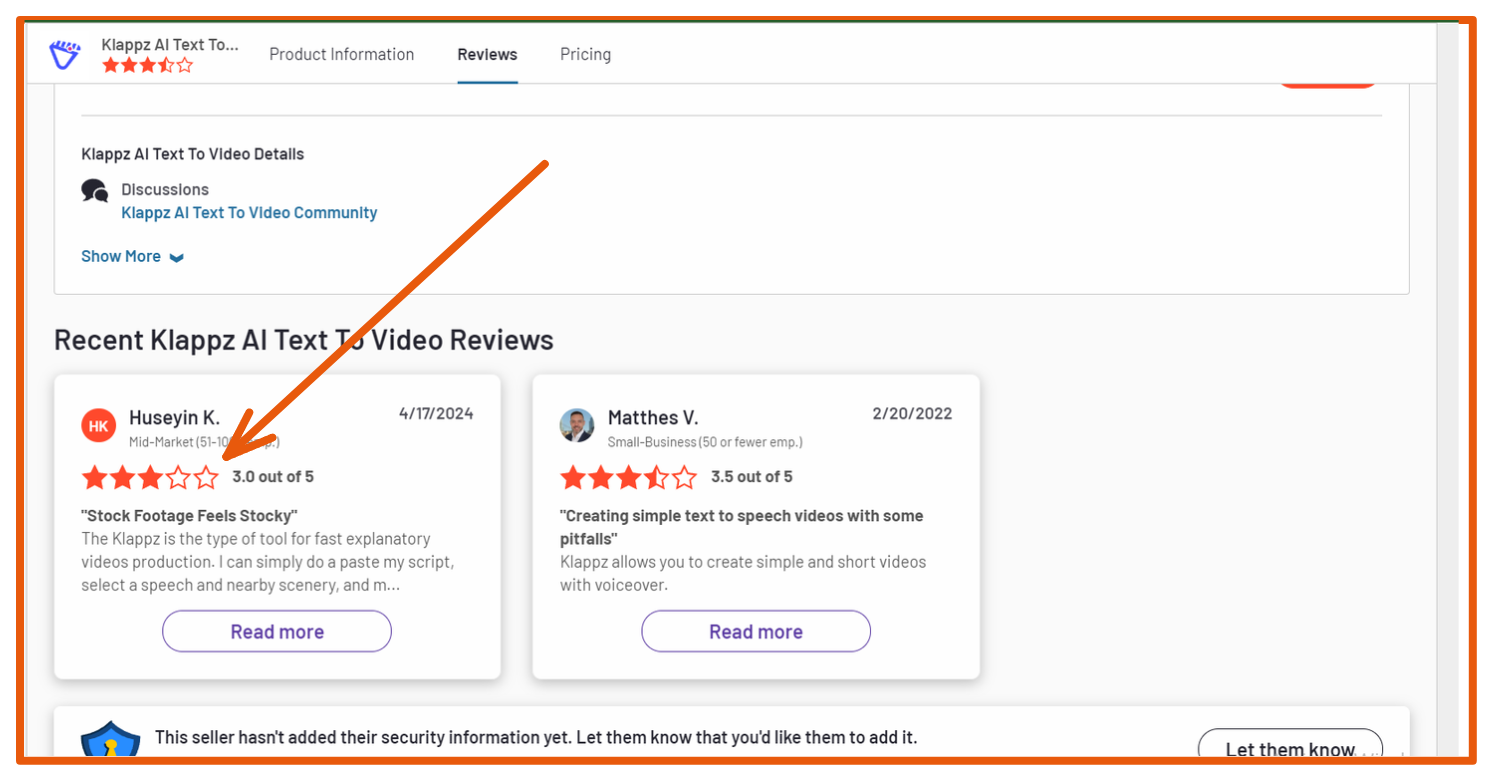
Successful SaaS != copying what’s out there. It’s finding gaps and offering something better.
4. Steal What Others Are Building Legally
Ideas == 0.
Execution is everything.
It’s not about literally stealing ideas, but rather observing what others are building, learning from it, and finding ways to improve or pivot.
No need to reinventing the wheel. You just need to make it spin smoother. Here’s how you can ethically gather inspiration:
Where to Look? —-> Upwork, Twitter/X
How to Use Upwork to Find Niche SaaS Ideas
Upwork is a treasure trove of real business needs. The whole idea here is to spy on what others are building. Simple.
Step 1: Head over to upwork.com
Step 2: Log in or create an account as a freelancer if you don’t have one yet.
Step 3: In the Search Box, Enter “SaaS”
Step 4: Switch the search option to “Jobs” to see what companies are posting.
Check Job Listings for Clues
Look for listings that mention tasks like “SaaS”, “SaaS development”
Read the job details: Some even include links to the SaaS tools they’re working on. This gives you direct insight into what others are building.
—-> Example:

The Key Takeaway Here: Upwork jobs can reveal exactly what others are building, the features they’re focusing on, and the problems they’re trying to solve. Use this as inspiration for your own niche SaaS.
Also use the hashtag #buildinpublic in X to see what others are building or probably the niche they’re playing on.
Example:
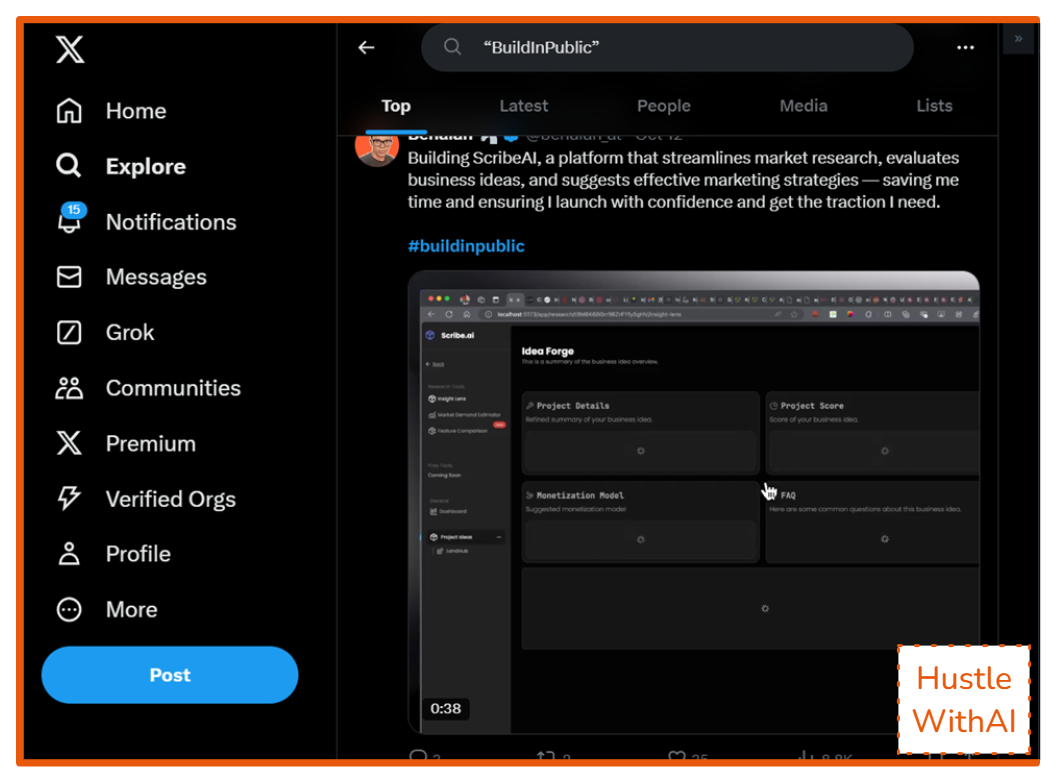
5. Leverage Social Media
Social media insights == gold for SaaS ideas
Where to Look? —-> Facebook Groups, Reddit Subs
FB groups and reddit subs are good place to start with.
- Join FB Communities/reddit subs where your prospective audience are likely to be
- Actively engage and try to solve other people’s problems. This is where you can get firsthand insights into the problems people are facing.
How to Use It:
- Join Groups Related to Your Niche: For example, if you’re interested in building SaaS for small businesses, join groups where entrepreneurs and business owners hang out.
- Look for Posts Asking for Recommendations or Complaining About Tools: These posts can reveal gaps in existing solutions.
Reddit: Engage with Niche Subreddits
Reddit is a goldmine for discovering what people are struggling with.
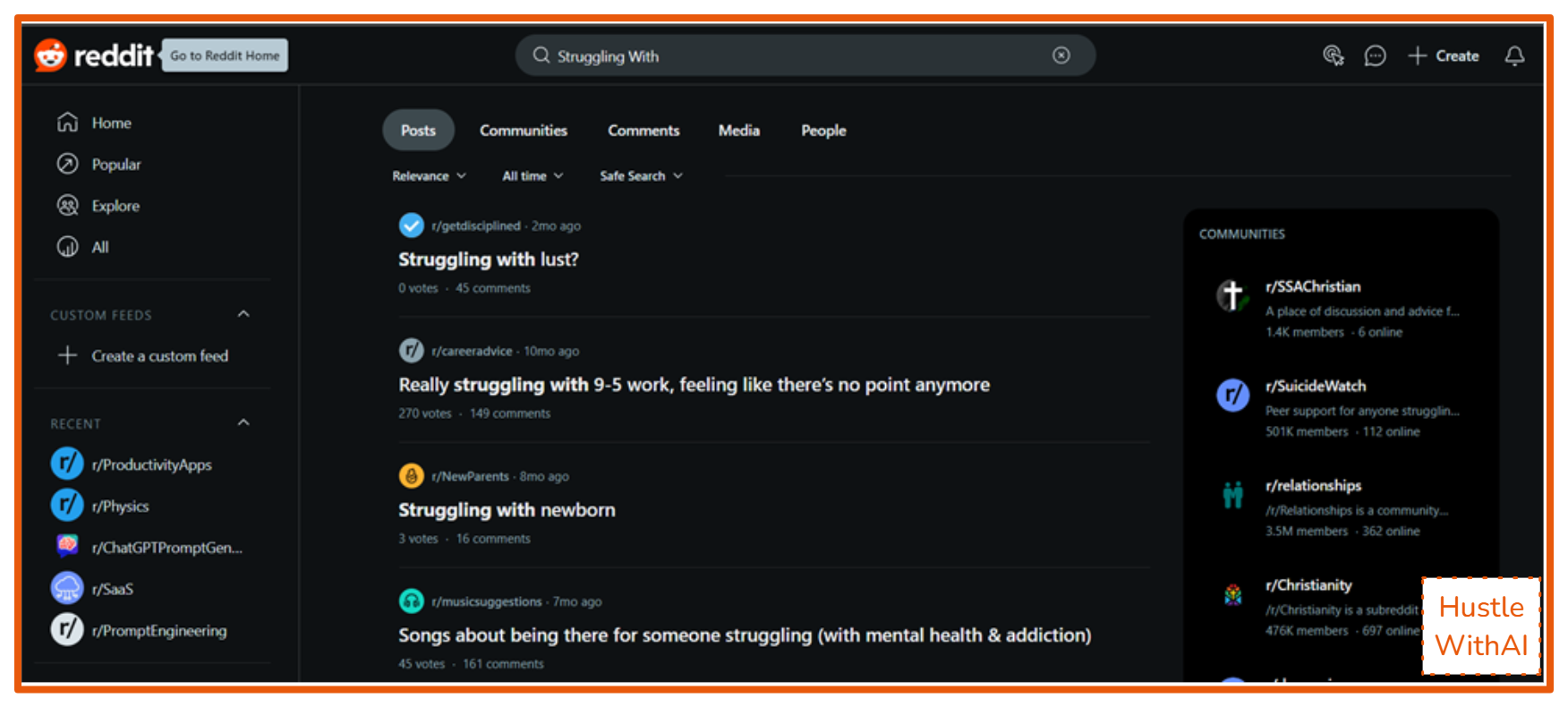
If you want to take it to another level, use Gummysearch to find insights from Reddit subs.
Search for Threads with Keywords Like “Tool for,” or “Struggling With…” This will lead you directly to discussions about specific problems.
How to Validate Your Niche SaaS Ideas
Finding a great niche SaaS idea is just the beginning.
The next step is to make sure there’s actual demand for it.
Validation helps you avoid wasting time and resources on an idea that won’t sell.
Here’s how you can do it:
1. Look at Search Data for Keywords Related to Your SaaS Idea
Before building anything, start by checking if people are already searching for solutions related to your idea. If there’s search volume, it’s a sign of demand.
I won’t repeat this process as we have done this in the previous section.
2. Create a Simple Landing Page + Drive Traffic to It
A landing page is an easy way to test if your idea resonates with your target audience. If people are willing to sign up or show interest, it’s a good sign you’re on the right track.
Build a Simple Landing Page:
If you’re a dev, it’s not a bad idea to start with templates (you can find free ones online with a quick search). Edit and customize the template to fit your product’s message, and you’re ready to go.
You can also use no-code tools like Framer, Bubble, or Webflow to quickly create a nice landing page. You don’t need something crazy, in my opinion.
Drive Traffic to the Landing Page:
There are two ways you can do this:
Free Traffic:
Facebook groups: Share your project/idea in relevant communities where your target audience hangs out, if it’s allowed. I once got kicked out of a group because of this haha.
Your social media: Post about your project on your personal accounts to attract interest from your network.
Reddit posts: Engage in niche subreddits and share your landing page when appropriate.
Paid Traffic:
If you want to see results quickly, use Google Ads, Facebook Ads, or Reddit Ads to send traffic to your landing page. Start with a small budget to see if people are interested.
Before you do this, set up your Google Analytics (GA) to track views, clicks, and any actions users take on your page. This will give you insights into what’s working and what needs improvement.
—-> Example: Below is a landing page I created when I started building OvernightJobsHQ.
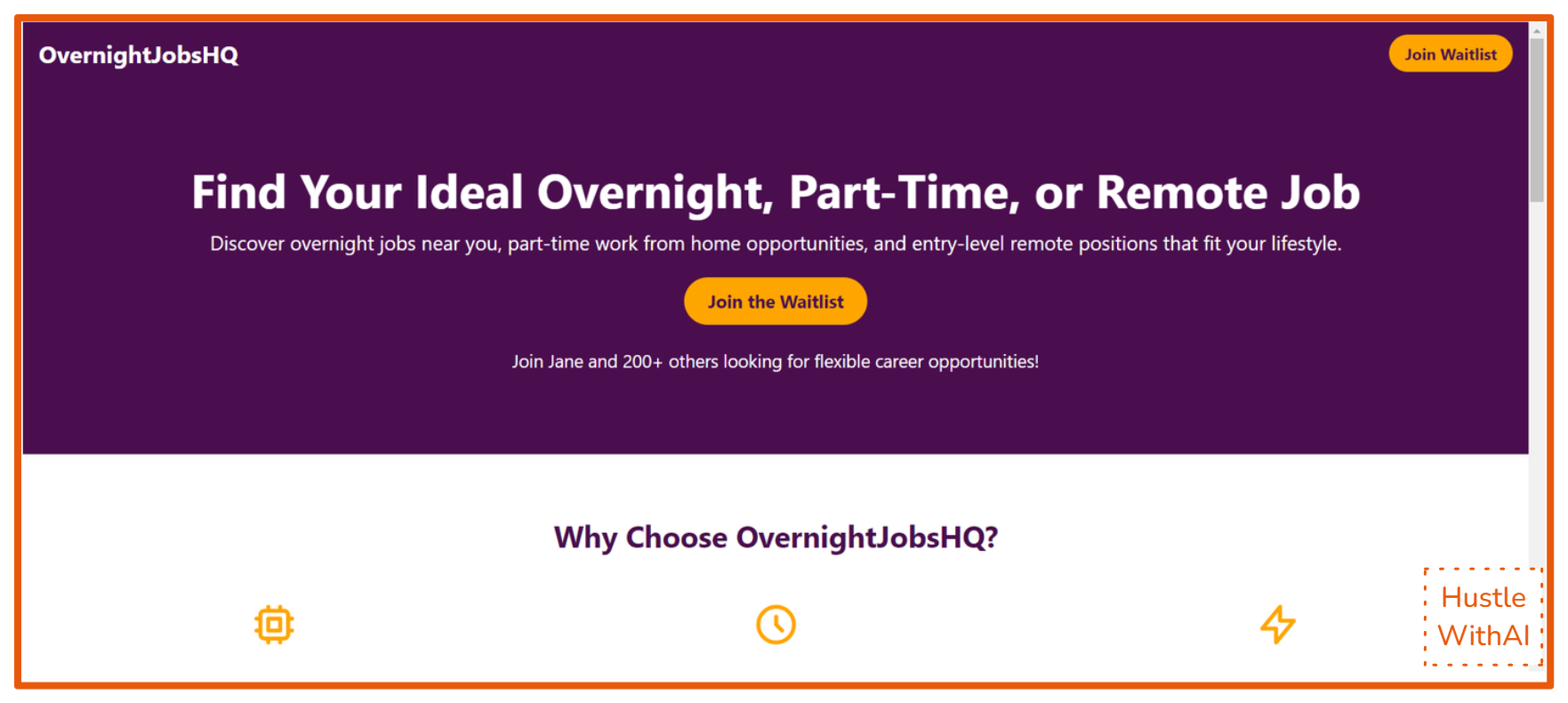
Example 2: ObsessLess Waitlist Page
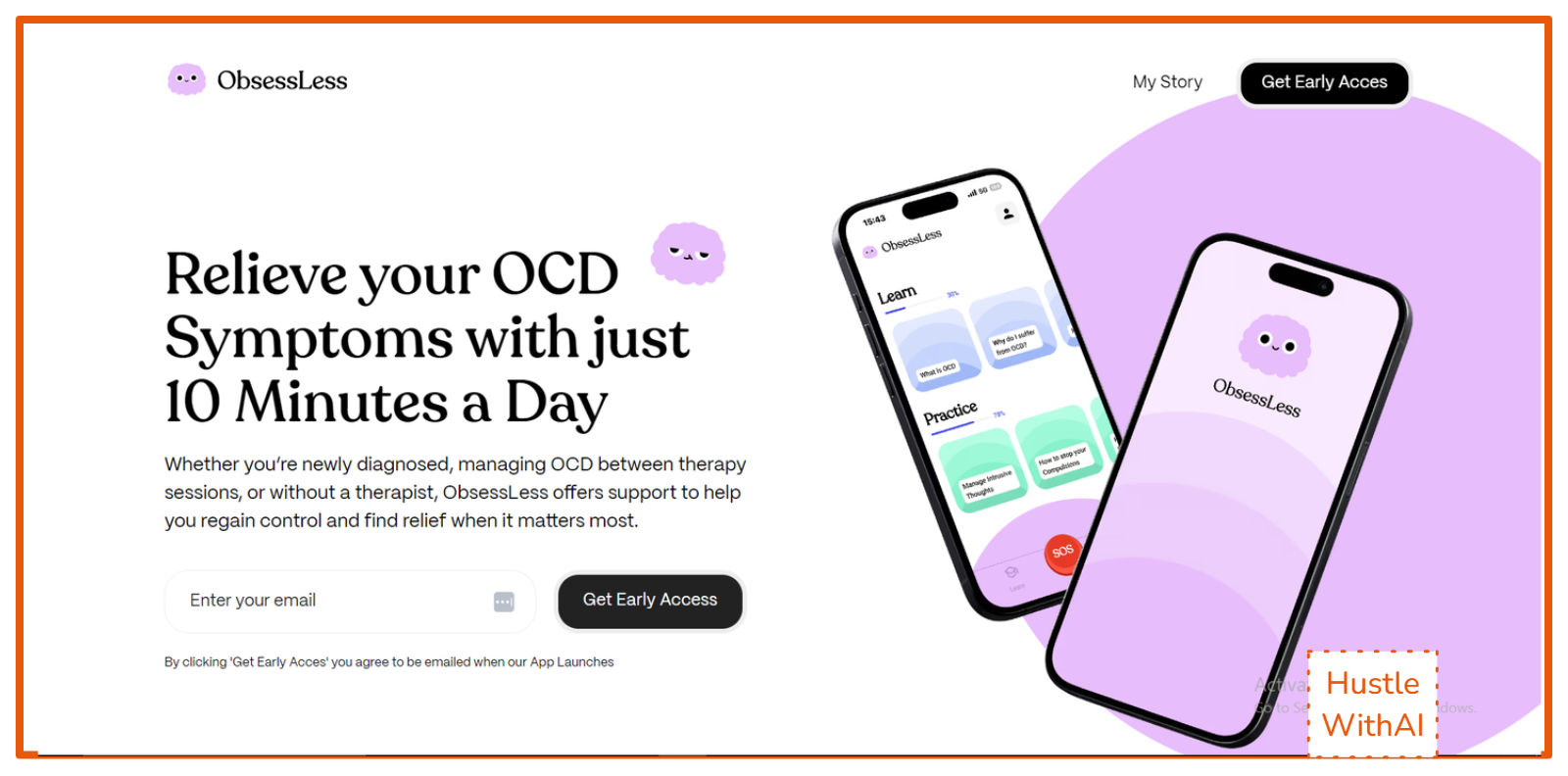
Credit: ObsessLess
This can be witty. For OvernightJobsHQ, I saw from GA that I had over 37 views but 0 people signed up to my waitlist. Maybe my messaging wasn’t impressive. If people are interested enough to sign up, you’ve got something worth pursuing.
A landing page acts as a quick litmus test. If you’re getting sign-ups, it means your idea is resonating. If not, adjust your message, improve your offer, or consider a different direction altogether.
Also check out: 8 Profitable Non-AI SaaS Ideas to Build Your Next Startup

